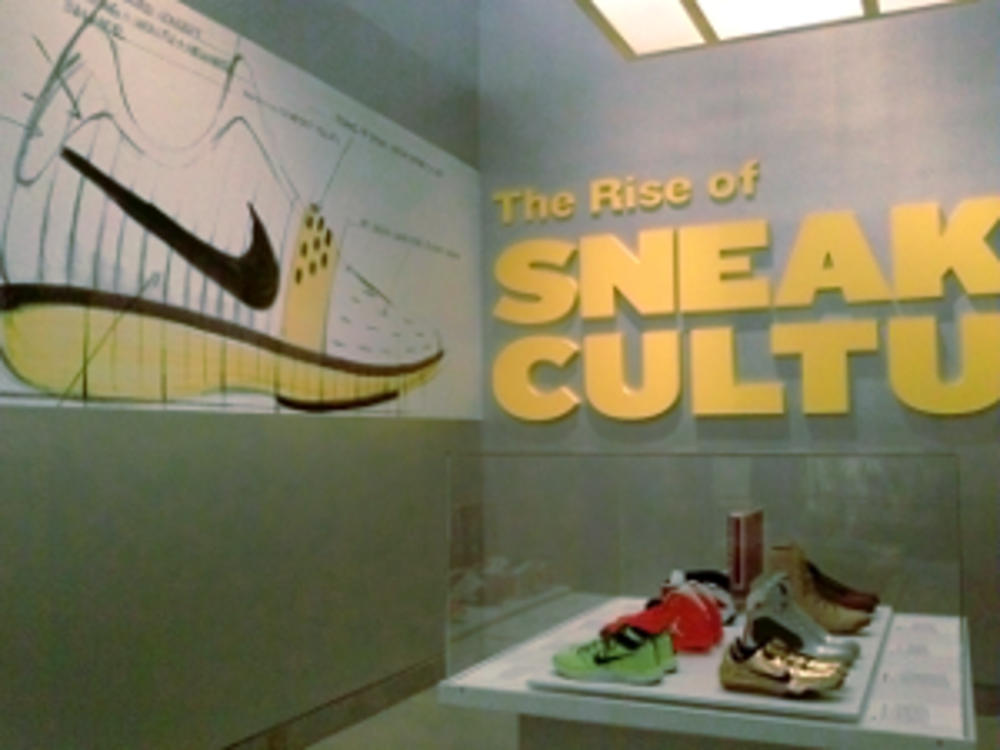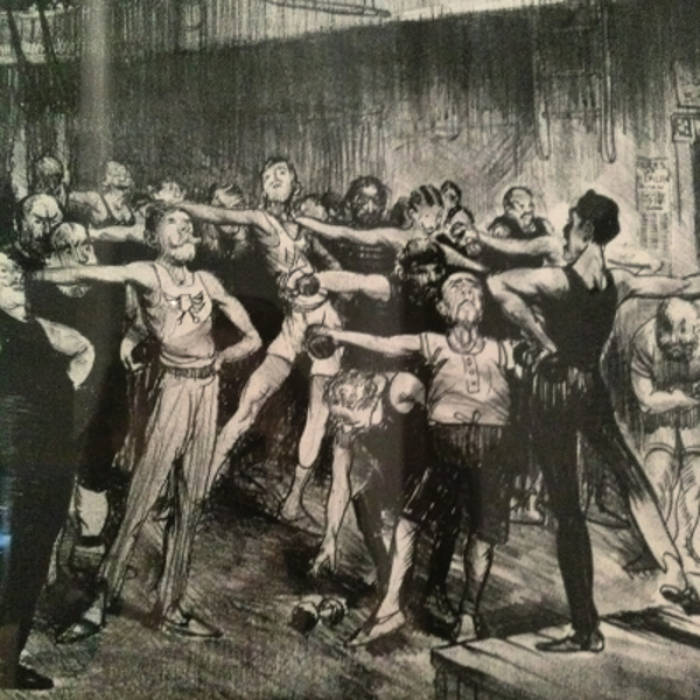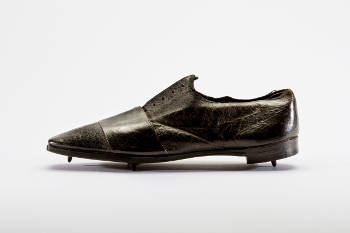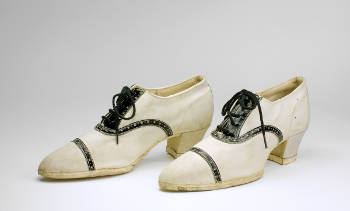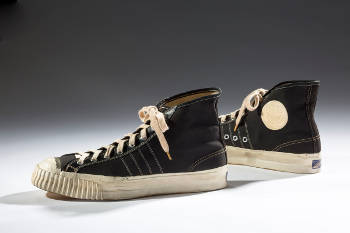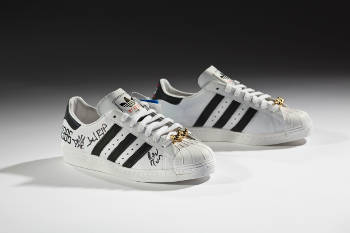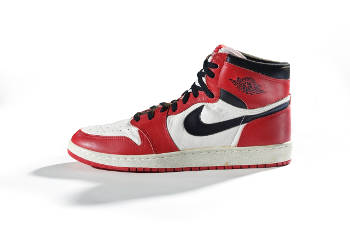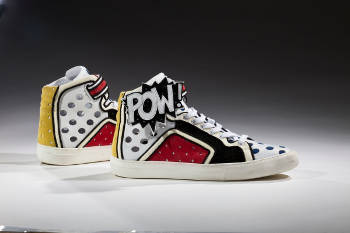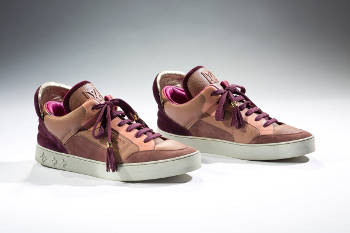CURATOR'S CHOICE SM
Exhibition Reviews
| Home | | Museum
Guide | | International |
| Theater |
Julia Slaff
“The Rise of Sneaker Culture” Sneakers are a universal item in anyone’s wardrobe, surpassing age, gender, and social status. However, the story behind sneakers is not as simple as one would think. They have a long history, rivaling jeans, and have become a significant part of our culture. The exhibition “The Rise of Sneaker Culture” evaluates how, as the wall-text notes, “sneakers might appear to be democratic, not all are created equal.” “The Rise of Sneaker Culture” is a touring exhibition created from Toronto’s Bata Shoe Museum, and is organized by the museum and American Federation of the Arts (AFA). Works displayed include sneakers from the Canadian museum, the Kosow Sneaker Museum and the Northampton Museums and Art Gallery. Archives from sneaker companies such as Adidas, Converse, Nike, Puma, and Reebok have shoes on view. Sneaker connoisseurs like hip-hop star Darryl “DMC” McDaniels, “sneaker guru” Bobbito Garcia and “Obsessive Sneaker Disorder” Dee Wells also have their collections shown.
The exhibition is a multimedia marvel which includes videos, photographs, and design drawings giving viewers the whole picture of the social history, design innovations, fashion trends, and endorsements from celebrities that have formed sneaker culture presently. Excerpts from the corollary documentary “Just for Kicks,” tracking sneaker culture from the 1970s to the early 2000s, are likewise screened in the exhibition. The exhibition questions sneaker culture’s advancement in the public eye. Generally, the show inquires why some sneakers become valued more than others. Specifically, “The Rise of Sneaker Culture” ponders how sneakers communicate privilege and inclusion and how these shoes turned from athletic uses to fashion items and icons of masculinity. Most importantly, the exhibition questions how a pair of sneakers can display overtones of social information from just one glance. Answers to these inquires are unveiled through six organized sections. The collection spans the existence of the athletic footwear. Antiques from the origin of sneaker production include a pair of spiked running shoes from 1860 and high-heeled shoes for women from 1925. Likewise, famous sneaker partnerships with artists and celebrities as Pierre Hardy, Damien Hardy, and Kanye West are shown. One of the pivotal items displayed is a pair of Air Jordans I. It is in its own section with a similar appellation, Air Jordans I-XX3, dedicated to the legacy of the shoe collection and its influence in sneaker culture’s evolution. “Innovation,” the exhibition’s first section, accounts for sneaker’s origins from the 1820s to the 1920s. A new vulcanization process, extracting rubber from rubber trees, inspired manufacturers to craft a comfortable athletic wear option. This innovation occurred at the same time as an increasingly more industrialized society craving physical activity to fill its new free time. Included in the section are the oldest running shoes from the 1860s, original Converse All-Stars from 1917 and a pair of rubber-soled canvas-toped Keds from the same period. A version of the latter are still produced today.
The second section, the “Rubber Revolution,” spans 50 years of sneaker development from the 1920s to the 1970s. It evaluates the innovation in sneakers and the consequential rise of consumer culture. Sneakers started being worn by a wider social and age clientele and athletic stars as basketball player Chuck Taylor and tennis pro Jack Purcell commenced showcasing the shoes. Sneakers from the Dominion Rubber Company Fleet Foot, 1925 high-heeled sneakers for women, the Converse Grippers made during the ‘40s and ‘50s, and one of the first leather high-tops, Adidas Allround, from 1960 are shown.
“Body/Sole,” the third section, highlights when high-end
sneakers became symbolic of “conspicuous consumption.” It
evaluates how the sneaker became a new stylish item valuable on the
street and in the gym. “Body/Sole” closes with two important
events in sneaker culture: the launch of the Air Jordan collection in
1985 and the rapper Run-DMC signing with Adidas after the release of
“My Adidas” in 1986.
“Fitness/Fashion,” the fourth section, looks at the union
of basketball, hip-hip, and sneakers from the ‘80s to the present,
when sneakers gained their culturally symbolic value in the eyes of
a mass audience. Sneakers became markers of status and taste in the
framework of “contemporary urban masculinity.” Shoes by
big-name fashion designers such as Jimmy Choo and Lanvin are displayed.
To further illustrate this fad in the rise of sneaker culture, “rare
cult collaborations” such as Adidas x Kanye West Yeezy Boost from
2015 are included.
The fifth section delves into the Air Jordan sensation, which commenced in 1985 following Nike’s signing with basketball superstar Michael Jordan the previous year. Three display cases are filled with Jordan shoes through the ages, specifically "Air Jordans I to XX3," proving their significance in the sneaker industry and the culture as a whole. The final section details sneaker innovation and design, including a display featuring a section of Tinker Hatfield designs and shoes, and many others. The “Innovation” section includes a helpful glossary of words for those outside the phenomenon to understand. The exhibition is on view at the Brooklyn Museum from July 10 to October 4, 2015. [Julia Slaff] IF YOU GO |
